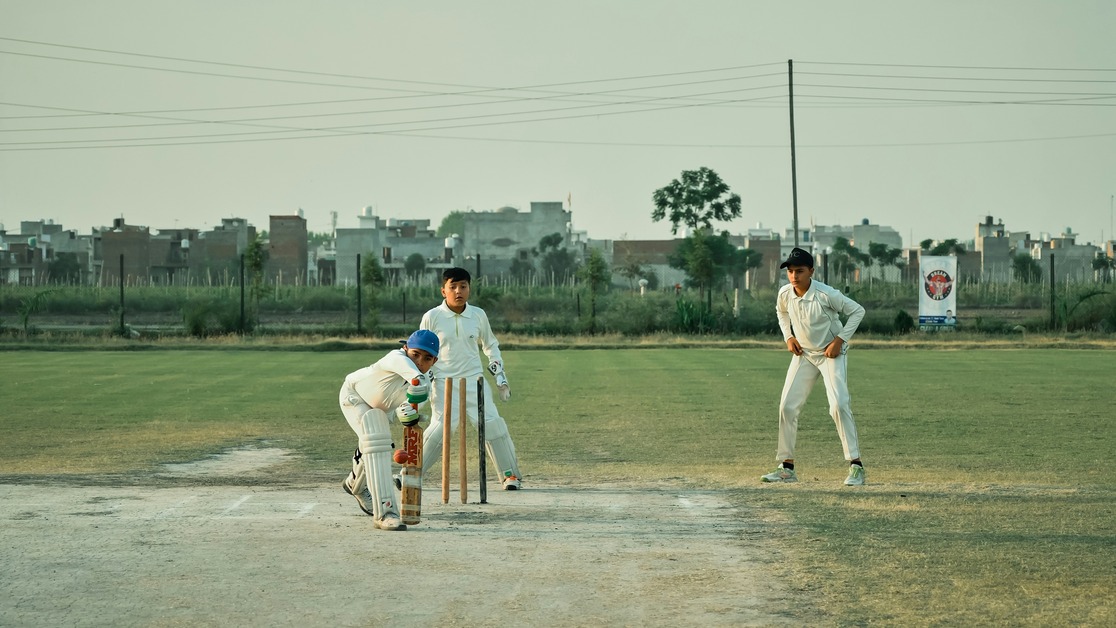Cricket: A Deep Dive Into the World’s Most Intricate Bat-and-Ball Game
Cricket is more than a sport—it is a cultural phenomenon, a diplomatic tool, and a mirror reflecting societal change across continents. From colonial fields to modern stadiums, cricket has evolved into one of the world’s most watched and deeply followed sports. This article answers your questions about the origins, formats, rules, major players, and global significance of cricket. Whether you’re a curious beginner or an advanced follower, understanding cricket reveals much more than how the game is played—it explains why it endures.
The Origins of Cricket: A Game Born in English Pastures
The earliest definitive reference to cricket dates back to 1597 in England. However, scholars suggest that the game may have been played by children as early as the 13th century in southeast England. What began as a rustic pastime soon became formalized. By the 18th century, cricket had become England’s national sport, governed by rules codified by the Marylebone Cricket Club (MCC) in 1787, which continues to play a key role in rule-making today.
The British Empire played a crucial role in globalizing cricket. The game traveled with colonial administrators and merchants to India, the Caribbean, Australia, and Africa. In each region, it absorbed local flair, transforming itself into a powerful symbol of both colonial power and national pride.
Understanding the Rules of Cricket: More Than Just Bat and Ball
Cricket is played between two teams of 11 players. The core objective is simple: one team bats and attempts to score runs, while the other bowls and fields to restrict runs and dismiss the batters.
Here’s a simplified table outlining cricket’s primary components:
| Component | Explanation |
|---|---|
| Batting | Players aim to score runs by hitting the ball and running between wickets. |
| Bowling | Delivering the ball to dismiss batters and limit runs. |
| Fielding | Positioning and catching to prevent scoring and enable dismissals. |
| Overs | A set of six legal deliveries; matches are divided based on a set number of overs. |
| Wickets | Dismissals achieved through bowled, caught, run-out, stumped, etc. |
| Runs | Scored by batters running or hitting boundaries (4 or 6 runs per hit). |
| Umpires | Two on-field officials ensure rules are followed; a third umpire aids via replay. |
| Innings | A team’s turn to bat or bowl; match formats vary by number of innings. |
The game is governed by 42 laws, meticulously maintained by the MCC. These cover aspects from equipment and player conduct to rare modes of dismissal like “Mankading” or “Timed Out.”
The Formats of Cricket: Adapting to the Times
Cricket is unique among major sports in its variety of formats. These are not merely rule modifications but significant cultural expressions. Each format reflects different audience expectations, broadcasting needs, and playing strategies.
1. Test Cricket
The oldest format, played over five days, allows for unlimited overs and two innings per side. Test cricket is regarded as the ultimate examination of skill, patience, and endurance. Nations like India, England, and Australia treat Test series with near-religious reverence.
2. One Day Internationals (ODIs)
Introduced in the 1970s, ODIs limit each team to 50 overs. The shorter format necessitates faster scoring and dynamic strategies. Iconic tournaments like the Cricket World Cup (held every four years) are played in this format.
3. Twenty20 (T20)
Cricket’s answer to modern entertainment demands, T20 games consist of 20 overs per side and last approximately three hours. This fast-paced version has brought cricket to a new generation and inspired the rise of professional leagues.
The Rise of T20 Leagues: Cricket Meets Commerce
Perhaps the most revolutionary change in cricket’s recent history is the emergence of franchise-based T20 leagues. The Indian Premier League (IPL), launched in 2008, set a precedent by combining athletic spectacle with Bollywood glamour, strategic auctions, and global player participation.
Today, leagues like Australia’s Big Bash League, the Pakistan Super League, and South Africa’s SA20 mimic the IPL model. These leagues have increased cricket’s visibility and economic clout while also influencing national team strategies and player availability.
Yet, this commercialization comes with trade-offs. Critics argue that T20 leagues siphon attention and resources away from Test cricket, and even ODIs are facing a viewership decline. Balancing the formats is now a key challenge for cricketing bodies.
The Global Reach of Cricket: More Than a Commonwealth Sport
Though historically concentrated in former British colonies, cricket’s global map is expanding.
1. India
Cricket is the undisputed dominant sport in India, followed by over a billion people. The Board of Control for Cricket in India (BCCI) is the most powerful cricketing body globally, driving revenue, policy, and talent development.
2. Australia and England
As founding nations, both maintain a deep cricketing heritage. The Ashes, a bilateral Test series between the two, remains among the sport’s fiercest rivalries.
3. West Indies
A mosaic of Caribbean nations competes as a single team. Their swashbuckling style has defined many eras, especially in the 1970s and 1980s.
4. Pakistan and Sri Lanka
Both countries have contributed enormously to cricket’s diversity and tactical richness. Pakistan is renowned for its fast bowlers, while Sri Lanka’s innovations, like the “doosra” and “carrom ball,” have left indelible marks.
5. Emerging Nations
Afghanistan, Ireland, and Nepal are increasingly competitive. The U.S. has launched Major League Cricket, seeking to tap into its South Asian diaspora. The International Cricket Council (ICC) is pushing for inclusion in the Olympic Games, possibly by 2028.
Cricket and Technology: How the Game Embraces the Future
Modern cricket is a fascinating fusion of tradition and technology. Umpires now have Decision Review Systems (DRS), including ball-tracking, ultra-edge sound analysis, and infrared imaging (Hot Spot). These tools reduce human error, though debates about over-dependence persist.
Wearable tech tracks player fitness, while analytics guide decisions from bowling changes to batting orders. Television broadcasters enhance viewing through spider-cams, pitch maps, and AI-generated predictions. Social media and streaming have brought cricket to screens worldwide, beyond national borders.
Women’s Cricket: A Rapid Rise Deserving More Attention
For decades, women’s cricket remained in the shadows. But since the 2010s, it has gained visibility and investment. The 2017 Women’s World Cup final at Lord’s and the 2020 T20 World Cup final at the MCG drew massive crowds and viewership.
In 2023, India launched the Women’s Premier League (WPL), providing a dedicated platform for female cricketers to gain recognition and financial stability. With role models like Ellyse Perry, Smriti Mandhana, and Heather Knight, girls around the world now see viable career paths in cricket.
Cultural and Political Impact of Cricket
Cricket often transcends sport. The 1996 World Cup in Sri Lanka continued despite terror attacks, sending a message of resilience. The 2005 Ashes saw a divided England unite in celebration. In India and Pakistan, cricket diplomacy has occasionally thawed relations.
It is also a mirror of social change. In South Africa, post-apartheid cricket became a tool of reconciliation. In India, cricket has become a vehicle of aspiration, bridging caste and class divides. The game’s iconography—Sachin Tendulkar’s straight drive, Shane Warne’s leg spin—is etched into national memories.
Challenges Ahead: Sustainability, Inclusivity, and Governance
Despite its popularity, cricket faces pressing questions:
- Scheduling Congestion: With three formats and domestic leagues, players face burnout.
- Inequality in Funding: Rich boards like the BCCI dominate revenues, leaving poorer nations behind.
- Corruption and Fixing: Betting scandals continue to haunt cricket’s credibility.
- Gender Disparity: Pay gaps and visibility disparities persist between men’s and women’s cricket.
- Climate Change: Unpredictable weather patterns threaten match schedules and pitch preparation.
Addressing these requires collaborative governance, stronger regulations, and a commitment to keeping the spirit of the game intact.
The Philosophy of Cricket: What Makes It Endure?
Cricket is slow compared to modern sports, but therein lies its charm. A Test match unfolds like a novel—each day a chapter, each session a plot twist. A single delivery can change the course of a game, invoking poetry, precision, and pressure in equal parts.
It’s also a game of deep individual and collective responsibility. A batter may occupy the crease for hours, yet one mistake means dismissal. A bowler may toil for 20 overs without reward, only to find success on the 21st. Cricket teaches patience, strategy, resilience—lessons beyond the boundary.
What Lies Ahead?
Cricket will not look the same in 2050 as it does today. It may involve VR training, climate-proof stadiums, and hybrid international leagues. But at its heart, it will still be a contest between bat and ball, ambition and restraint, flair and discipline.
The next frontier could be Olympic recognition, U.S. expansion, and deeper grassroots investments. But cricket’s soul—its unpredictable beauty, emotional resonance, and social fabric—will remain untouched. The game has endured wars, empires, and revolutions. It will likely survive streaming wars and TikTok trends, too.
Cricket is a game of numbers and narratives, of tradition and transformation. Whether played on a dusty field or a lush outfield, under the scorching sun or floodlit night, it remains a canvas on which life’s drama is artfully painted.
If you’ve ever wondered why a sport so complex commands such passion, the answer lies in this enduring truth: cricket, like life, rewards those who wait, who adapt, and who dream.
Ask ChatGPT







